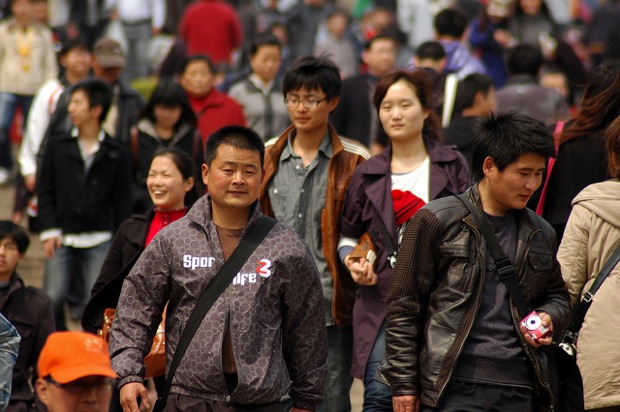
Your electric car might get you into heaven, but it's not going to save the Earth if China keeps up at its current pace. But while China may remain the world's largest energy consumer and CO2 emitter--that's just what happens when you represent 20% of humanity--the country can still put a dent in its energy and carbon consumption, stabilizing its emissions before mid-century.
That's according to a new report from the Lawrence Berkeley National Laboratory that analyzes two potential scenarios: a baseline based on China's current policy plans, and one that anticipates more ambitious energy efficiency goals. In both of these models, China's energy use stabilizes by 2050--the first scenario projects that CO2 emissions will climb to 2 billion metric tons by 2033 and drop down to 11 billion metric tons by mid-century, while the second predicts that China's greenhouse gas emissions peak in 2027 at 9.7 billion metric tons and then drop to seven billion metric tons by 2050.
"This is aimed at saying China has set out a policy direction and some of these policies are not in place, but they fall within a policy framework. We're modeling what the policy framework would look like if implemented fully and targets are met," says David Fridley, one of the authors behind the study. The study assumes that specific policies--for example, China's goal to reach 20% renewable energy by 2020--will be met, though it doesn't delve into how these policies will be reached. In a communist dictatorship, it is best not to ask how policies are reached.
So why do people usually assume that China's carbon emissions will never stop growing? The LBL report bucks conventional scenario analysis, which is based on top-down factors like gross domestic product and population growth. "In many models, including the IPCC, everything rises exponentially forever," explains Fridley. "[Our model] is more specifically based on what we call saturation effects. You can only build so many roads and railroads, and household can only own so many TVs and refrigerators. Once you allow those saturation effects to express themselves, this is what you get. Things just naturally slow down."
In other words, China's population may want all of the stuff--cars, TVs, washing machines--associated with modern life now, but at some point, you can't fit another car in the driveway. The same thing is true of the country's energy-intensive industrial sector. For example, last year China consumed more cement to build the foundations of its new railway lines than the U.S consumed in total. Once the railroad lines are complete, the cement demand will no longer be there.
Even seemingly unstoppable sectors run up against barriers. According to Fridley, China is already within sight of the limits of how much coal it can physically produce in a year--and eventually, the country may put limits on annual extraction. But there's a caveat: "The single largest use of coal [in China] is power generation. It would take their plans for decarbonization of the power sector to be able to turn that coal trajectory around to absolute decline instead of slower growth," says Fridley.
It's impossible to say whether China's proposed energy policies will ever come to pass, but we had better hope that the country slows its frenetic growth soon. Get ready to be scared of India.
[Photo by Triplefivechina]
Reach Ariel Schwartz via Twitter or email.
Read More: More Than 25% Of CO2 Emissions Come From Buying Cheap Foreign Goods